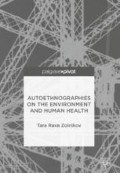Abstract
The focus of this chapter is on access to clean drinking water. Access to water, waterborne diseases, and water interventions are discussed. The story takes place in Kenya, where the author describes her experience walking to gather water.
Access this chapter
Tax calculation will be finalised at checkout
Purchases are for personal use only
References
Kleiner SM. Water: an essential but overlooked nutrient. J Am Diet Assoc. 1999;99:200–6. https://doi.org/10.1016/S0002-8223(99)00048-6.
United States Geological Survey. Water properties: facts and figures about water. 2012. http://ga.water.usgs.gov/edu/waterproperties.html
World Health Organization. Nutrients in drinking water. In: World Health Organization European Center for Environment and Health, November, 2003. Rome, Italy: World Health Organization Library Cataloguing-in-Publication Data; 2003. p. 11–160.
Dawson-Hughes B, Harris SS, Palermo NJ, Castaneda-Sceppa C, Rasmussen HM, Dallal GE. Treatment with potassium bicarbonate lowers calcium excretion and bone resorption in older men and women. J Clin Endocrinol Metab. 2009;94:96–102. https://doi.org/10.1210/jc.2008-1662.
Ross AC, Manson JE, Abrams SA, Aloia JF, Brannon PM, Clinton SK, Durazo-Arvizu RA, Gallagher JC, Gallo RL, Jones G, Kovacs CS. The 2011 report on dietary reference intakes for calcium and vitamin D from the Institute of Medicine: what clinicians need to know. J Clin Endocrinol Metab. 2011;96(1):53–8.
Elisaf M, Milionis H, Siamopoulos K. Hypomagnesemic hypokalemia and hypocalcemia: clinical and laboratory characteristics. Miner Electrolyte Metab. 1997;23:105–12.
Institute of Medicine. Dietary reference intakes: water, potassium, sodium, chloride, and sulfate. Institute of Medicine of the National Academies; 2004. http://www.iom.edu/Reports/2004/Dietary-Reference-Intakes-Water-Potassium-Sodium-Chloride-and-Sulfate.aspx
Rude RK. Magnesium deficiency: a cause of heterogeneous disease in humans. J Bone Miner Res. 1998;13:749–58. https://doi.org/10.1359/jbmr.1998.13.4.749.
Saris NE, Mervaala E, Karppanen H, Khawaja JA, Lewenstam A. Magnesium: an update on physiological, clinical, and analytical aspects. Clin Chim Acta. 2000;294:1–26. https://doi.org/10.1016/S0009-8981(99)00258-2.
Shils ME. Magnesium in modern nutrition in health and disease. 9th ed. New York, NY: Lippincott Williams and Wilkins; 1999. p. 169–92.
United Nations. Goal 6: ensure water and sanitation for all. 2016. http://www.un.org/sustainabledevelopment/water-and-sanitation/
World Health Organization. Food security and climate change. 2012. http://www.who.int/pmnch/about/20120614_food_security_press_release/en/index.html
Wright J, Gundry S, Conroy R. Household drinking water in developing countries: a systematic review of microbiological contamination between source and point-of-use. Tropical Med Int Health. 2004;9(1):106–17. https://doi.org/10.1046/j.1365-3156.2003.01160.x.
CIA. Kenya factsheet. 2016. https://www.cia.gov/library/publications/the-world-factbook/geos/ke.html
World Bank. Improved water source. 2016. http://data.worldbank.org/indicator/SH.H2O.SAFE.ZS?locations=KE
WHO Unicef. Kenya: estimates on the use of water resources and sanitation facilities. 2016. https://www.wssinfo.org/
Marshall S. The water crisis in Kenya: causes, effects and solutions. Global Maj E-J. 2011;2(1):31–45.
Wafula P. Lack of investment in water sector leaves Kenyan towns parched, Business Daily. Nairobi, Kenya: Nation Media Group; 2010. p. 2. http://www.businessdailyafrica.com/-/539546/958756/-/item/1/-/wo5d3ez/-/index.html
Njeru G. Kenya: climate change water crisis impacts hospital maternal care, Women News Network (WNN), July 13; 2010. http://womennewsnetwork.net/2010/07/13/kenyamaternalh2o/
Kenya Environmental & Political News Weblog. Cholera outbreaks in W. Kenya Blamed on Contaminated Water, Nairobi, Kenya. 2008. http://kenvironews.wordpress.com/2008/07/29/cholera-in-outbreaks-w-kenyablamed-on-contaminated-water/
Kimani-Murage EW, Ngindu AM. Quality of water the Slum Dwellers use: the case of a Kenyan Slum. J Urban Health: Bull NY Acad Med. 2007;84(6):829–38. http://www.ncbi.nlm.nih.gov/pmc/articles/PMC2134844/
Bryceson DF, Howe J. Rural household transport in Africa: reducing the burden on women? World Dev. 1993;21(11):1715–28. https://doi.org/10.1016/0305-750X(93)90079-O.
Curtis V. Women and the transport of water. New York, NY: Intermediate Technology Publications; 1986. p. 26.
Fekerte H. Women fuel wood carriers and the supply of household energy in Addis Ababa. Can J Afr Stud. 1989;23(3):446–7. https://doi.org/10.1080/00083968.1989.10804269.
WaterAid. Wateraid Madagascar. 2008. http://sipa.columbia.edu/academics/concentrations/epd/documents/20078/Wateraid%20America%20and%20Water%20Aid%20Madagascar.pdf
America Natural History Museum. Water is life. http://www.amnh.org/exhibitions/water-h2o-life/
Wald C. The secret history of ancient toilets. Nature. 2016;533(7604):456–8.
Hansen R. Water and wastewater systems in Imperial Rome. 2016. http://www.waterhistory.org/histories/rome/
Stockholm International Water Institute. Mar del Plata: 20 year anniversary seminar. 1997. http://www.siwi.org/documents/Resources/Reports/Report1_Mar_del_Plata_1997.pdf
Jacobsen KH. Introduction to global health: Jones & Bartlett Publishers; 2013.
Kraemer SM, Mosler HJ. Persuasion factors influencing the decision to use sustainable household water treatment. Int J Environ Health Res. 2010;20(1):61–79. https://doi.org/10.1080/09603120903398301.
Ajzen I. The theory of planned behavior. Organ Behav Hum Decis Process. 1991;50(2):179–211. https://doi.org/10.1016/0749-5978(91)90020-T.
Aronson E. The power of self-persuasion. Am Psychol. 1999;54(11):875–84. https://doi.org/10.1037/h0088188.
Bargh JA, Chartrand TL. The unbearable automaticity of being. Am Psychol. 1999;54(7):462–79. https://doi.org/10.1037/0003-066X.54.7.462.
Blechman EA. Moods, affect, and emotions. Hillsdale, NJ: Lawrence Erlbaum Associates; 1990.
Jalnawala N, Wilkin NE. The effect of DTC advertisement content on belief tenacity: a study of appeals and argument types. Res Soc Adm Pharm. 2007;3(1):28–46. https://doi.org/10.1016/j.sapharm.2006.05.004.
Johnson BT, Eagly AH. Effects of involvement on persuasion: a meta-analysis. Psychol Bull. 1989;106(2):290–314. https://doi.org/10.1037/0033-2909.106.2.290.
Petty RE, Cacioppo JT. The Elaboration likelihood model of persuasion. In: Berkowitz L, editor. Advances in experimental social psychology. New York, NY: Academic Press; 1986. p. 123–205.
Pierro A, Mannetti L, Erb HP, Spiegel S, Kruglanski AW. Informational length and order of presentation as determinants of persuasion. J Exp Soc Psychol. 2005;41(5):458–69. https://doi.org/10.1016/j.jesp.2004.09.003.
Tormala ZL, Petty RE. Contextual contrast and perceived knowledge: exploring the implications for persuasion. J Exp Soc Psychol. 2007;43:17–30. https://doi.org/10.1016/j.jesp.2005.11.007.
Rivers SE, Salovey P, Pizarro DA, Pizarro J, Schneider TR. Message framing and pap test utilization among women attending a community health clinic. J Health Psychol. 2005;10(1):65–77. https://doi.org/10.1177/1359105305048556.
Zolnikov TR, Blodgett Salafia E. Improved relationships in eastern Kenya from water interventions and access to water. Health Psychol. 2016;35(3):273.
Zolnikov TR, Blodgett-Salafia E. Access to water provides economic relief through enhanced relationships in Kenya. J Public Health. 2016;39:14–9.
Government of the Republic of Kenya. Kenya vision 2030: a globally competitive and prosperous Kenya, first medium term plan, 2008–2012. Nairobi, Kenya: Government of the Republic of Kenya, Office of the Prime Minister, Ministry of State for Planning; 2008. also referred to as Kenya’s Poverty Reduction Strategy (PRSP).
Author information
Authors and Affiliations
Rights and permissions
Copyright information
© 2018 The Author(s)
About this chapter
Cite this chapter
Zolnikov, T.R. (2018). Drinking Water. In: Autoethnographies on the Environment and Human Health. Palgrave Macmillan, Cham. https://doi.org/10.1007/978-3-319-69026-1_5
Download citation
DOI: https://doi.org/10.1007/978-3-319-69026-1_5
Published:
Publisher Name: Palgrave Macmillan, Cham
Print ISBN: 978-3-319-69025-4
Online ISBN: 978-3-319-69026-1
eBook Packages: Social SciencesSocial Sciences (R0)

